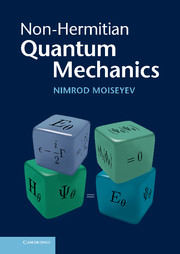Book contents
- Frontmatter
- Contents
- Preface
- 1 Different formulations of quantum mechanics
- 2 Resonance phenomena in nature
- 3 Resonances from Hermitian quantum-mechanical calculations
- 4 Resonances from non-Hermitian quantum mechanical calculations
- 5 Square integrable resonance wavefunctions
- 6 Bi-orthogonal product (c-product)
- 7 The properties of the non-Hermitian Hamiltonian
- 8 Non-Hermitian scattering theory
- 9 The self-orthogonality phenomenon
- 10 The point where QM branches into two formalisms
- Index
4 - Resonances from non-Hermitian quantum mechanical calculations
Published online by Cambridge University Press: 03 May 2011
- Frontmatter
- Contents
- Preface
- 1 Different formulations of quantum mechanics
- 2 Resonance phenomena in nature
- 3 Resonances from Hermitian quantum-mechanical calculations
- 4 Resonances from non-Hermitian quantum mechanical calculations
- 5 Square integrable resonance wavefunctions
- 6 Bi-orthogonal product (c-product)
- 7 The properties of the non-Hermitian Hamiltonian
- 8 Non-Hermitian scattering theory
- 9 The self-orthogonality phenomenon
- 10 The point where QM branches into two formalisms
- Index
Summary
The Hermitian properties of the Hamiltonian are related not only to the operator itself but also to the functions on which it acts. Hermitian Hamiltonians operate on functions in the L2 Hilbert space which correspond to boundary conditions which vanish at infinity. In this chapter, in order to move into the non-Hermitian domain, we will impose on the solutions to the time-independent Schrödinger equation (TISE) different boundary conditions which lead to solutions which can be associated with different types of the complex poles of the scattering matrix. These solutions will contain information which was not available within the scope of functions in L2.
By imposing outgoing boundary conditions on the eigenfunctions of the timeindependent Hamiltonian complex eigenvalues, Eres = ε − (i/2)Г, are obtained. These complex energies are associated with decaying resonance states which were discussed in the previous two chapters. The bound states (if they exist) appear as real eigenvalues since they result from exactly such outgoing boundary conditions which appear under the threshold energy. When incoming boundary conditions are imposed two kind of solution are obtained. One type of solution is the complex conjugates of the decay resonance solutions mentioned above. In scattering theory text books (see Taylor for example) the physical resonance solutions are associated with the poles of the scattering matrix which are embedded in the lower half of the complex energy plane. However, in nuclear physics the complex poles embedded in the upper half of the complex energy plane, so-called virtual states, are denoted as capture resonances.
- Type
- Chapter
- Information
- Non-Hermitian Quantum Mechanics , pp. 84 - 115Publisher: Cambridge University PressPrint publication year: 2011



